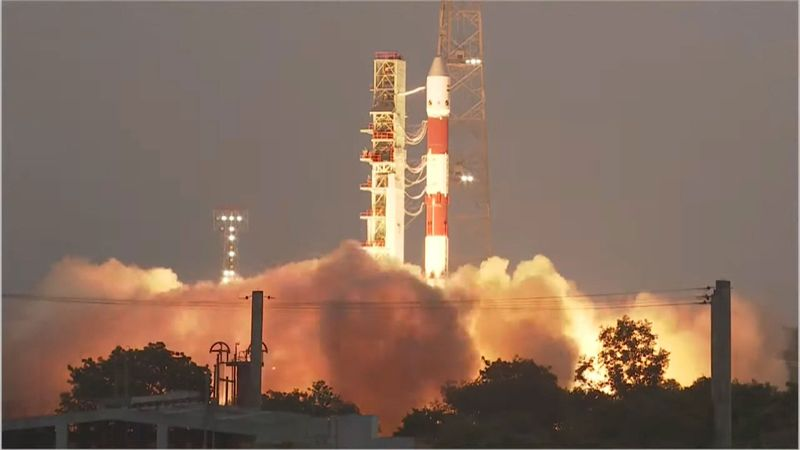India’s space ambitions face a temporary setback as ISRO’s PSLV-C61 Mission Fails during the 3rd stage. The Earth Observation Satellite EOS-09 remains undelivered. Here’s what went wrong.

Sriharikota, India – May 18, 2025: In a rare setback for India’s space program, the Indian Space Research Organisation (ISRO) announced the failure of its latest earth observation mission — PSLV-C61 — which was intended to launch the EOS-09 satellite into a sun-synchronous polar orbit.
The mission, launched from the Satish Dhawan Space Centre (SDSC) in Sriharikota, encountered an issue during the third stage of the launch vehicle, causing the mission to be declared unsuccessful. ISRO officials confirmed that the PSLV-C61 rocket performed as expected up to the second stage, but a technical anomaly in the third stage halted further progress.
“Today, the 101st launch was attempted. PSLV-C61 performance was normal till the second stage. Due to an observation in the 3rd stage, the mission could not be accomplished,” ISRO stated.
While ISRO has yet to release a detailed official statement, internal sources indicate that a technical team is already analyzing telemetry data to pinpoint the root cause of the failure.
About the EOS-09 Satellite: A Missed Opportunity
The EOS-09 was designed as a high-precision Earth Observation Satellite equipped with a Synthetic Aperture Radar (SAR) payload. This technology would have allowed for high-resolution imaging under all weather and lighting conditions, significantly boosting India’s capabilities in:
- Border surveillance
- Agriculture and forestry monitoring
- Natural disaster response, including floods and wildfires
- Climate and environmental research
The satellite was scheduled to be placed in a Sun-Synchronous Polar Orbit, a strategic orbit that enables consistent and repeated imaging of the same geographic area, making it ideal for both civilian and military applications.
A Rare Failure in PSLV’s Glorious Track Record
This mission marks only the third failure for ISRO’s trusted Polar Satellite Launch Vehicle (PSLV) since its debut in 1993.
- The first failure occurred during its maiden flight in 1993 due to a software glitch in the guidance and control system, along with a malfunction in the retro-rockets.
- In 2017, another PSLV mission failed when the payload fairing did not separate, leaving the satellite trapped inside the rocket.
Despite these occasional setbacks, PSLV has built a reputation globally as a reliable workhorse, having successfully delivered over 300 satellites into space across various missions.
What’s Next for ISRO?
The Indian space agency, known for its resilience and innovation, is expected to bounce back quickly. The investigation into the PSLV-C61 failure is underway, and experts are hopeful that lessons learned from this mission will lead to stronger and more refined systems in the future.
This failure, while unfortunate, also highlights the complexity of space missions — even for the most experienced space agencies. As ISRO continues to expand its ambitions with projects like Gaganyaan (India’s human spaceflight program) and Chandrayaan-3’s follow-up missions, each challenge only sharpens its engineering and operational excellence.
While the PSLV-C61 mission’s failure is a disappointment, it’s a reminder that space exploration is as much about perseverance as it is about precision. With over two decades of success and a forward-looking vision, ISRO remains a cornerstone of India’s technological prowess and global space leadership.
